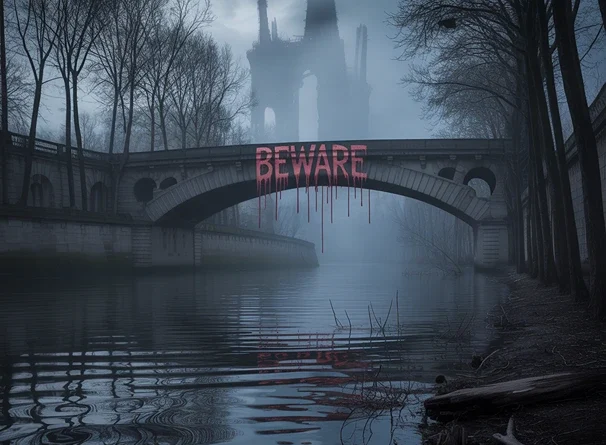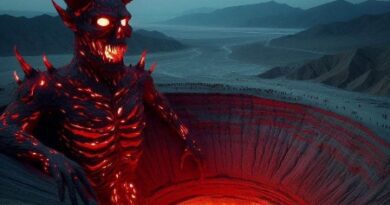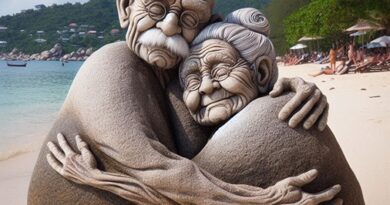The Terror Under Paris: On Tthe Pollution, Sharks, And Death Of The Seine River
As a tourist, when I arrive in a city, I am more than happy to discover a river, preferably one that also crosses the entire city. Beyond the fact that the river can be a transportation route, it contributes to the city’s beauty and serves as a tourist attraction with various cruises. In Paris, you will find the Seine River, undoubtedly one of the most famous in the world. It is not the most famous tourist attraction in Paris – after all, in the City of Lights you will find the Eiffel Tower (on both its touristy and dark sides), Notre-Dame de Paris, the Louvre Museum and more – but it is still hard to miss the river. Going on a Seine River cruise is also highly recommended, as discussed later.
With all due respect to the beauty of the Seine River, we are here to talk horror. Fortunately, this river has some scary sides – and no, we are not just referring here to the very popular Netflix movie “Under Paris,” about a shark that somehow ends up in the river’s waters.
In the following article, we will dive into some cool facts about the Seine River, the dangers it poses to those who enter it, and some sad cases of suicides and other disasters.
Where Is The Seine River Located?
The Seine (not to be confused with the San River in southeastern Poland) is the main river that flows through northern France. The river flows between various cities in France, such as Troyes, Rouen, Le Havre and Paris, which it divides into two parts.
Upper Paris is located on the “right bank” of the Seine River, while Lower Paris is on its “left bank.” Many of Pais’ must-see attractions are near the river banks: the Eiffel Tower, the Louvre, the Grand Palais, the Musée d’Orsay, and others. There are almost 40 bridges that connect the banks of the Seine, the most famous and probably the most impressive of all being the Pont Alexandre III.
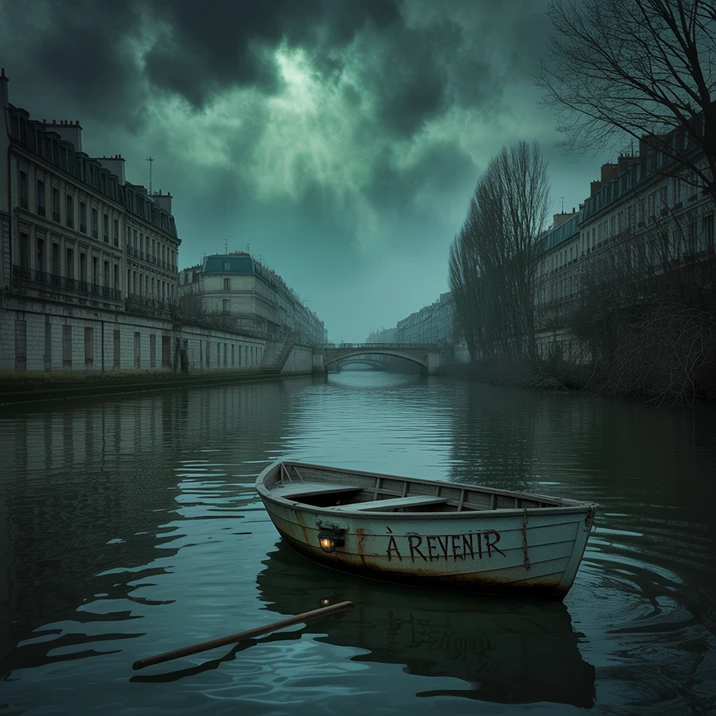
How Long Is The Seine River?
The Seine is the second longest river in France, after the Loire. It is about 776 km long, and various rivers flow into it. The river originates in the Dijon area, at an altitude of about 471 meters above sea level, from where it flows through cities and canals until it eventually flows into the English Channel. In Paris, about 445 meters from the sea, the river is about 24 meters above sea level. If you add these figures together, you understand that the flow in the river is relatively slow.
Since then, the Seine River has been used for several purposes. The first is, of course, transport and trade. The cold river water (we will understand to what extent later) is used to cool power plants. A significant percentage of the water, more than 50% in fact, is used for the water economy of Paris and its surroundings.
From a tourist perspective, the river is of significant importance today, as evidenced by the fact that the banks of the river inside Paris have been a World Heritage Site by UNESCO since 1991, partly because the banks express a rich history and stand out in their architecture.
The History Of The Seine River Is Very Deep (And Full Of Disasters)
The Seine is a very ancient river. We believe its history began around 12,000 BC, which makes it more than 14,000 years old. Of course, throughout history, man has changed and developed the river, although its basic course has remained similar.
In such an extended period, the fact that the river has experienced floods more than once is far from surprising: data shows a 1 in 100 chance of the river flooding in a given year. One of the most significant floods was in the winter of 1910, when the river overflowed its banks and caused a considerable percentage of central Paris to be completely submerged. The authorities carried out significant dredging in the river area in the 1960s to reduce the dangers of the high tides.
The river also plays a role in other wars and struggles experienced by the French, most of which ended in defeat if you believe the well-known joke. In 841 AD, for example, the famous Viking longships could be seen on the Seine. They plundered and burned entire regions, while imposing a significant siege on France.
Another example is the ship Télémaque, which sank in Rouen along the Seine in 1790 – that is, during the French Revolution – for reasons that are still unknown. One of the famous myths is that the ship had a valuable treasure on board, which is still somewhere at the bottom of the Seine.
Why Is The Seine River Called The Seine?
To this day, it is not entirely clear what precisely the word “Seine” means. One of the main interpretations is that the name comes from the foreign word “Sequana,” a name that describes the goddess of the Seine River in Celtic mythology, that is, among cities that lived in Western Europe from the Iron Age to the Roman Empire, and even later. Sequana, who was also the goddess of the springs of the river’s sources (which got their names after her), had several temples built in her honor, to which people who wanted healing came.
According to this view, the river expresses the goddess with its name in the Celtic language: “Sicauna,” meaning “sacred river.” This is why at the site of the springs, the main one of which is located at one of the sources of the Seine and belongs to Paris, people found countless statues of body parts, jewelry, coins, and other offerings over the years.
According to another interpretation, the river’s name is a corruption of the Gallic word “Isicauna,” loosely translated as “originating from the river Yonne.”
Are There Sharks In The Seine?
At this point, we must refer to the film “Under Paris” (or originally “Sous la Seine”), which was one of Netflix’s biggest hits of 2024. The film describes – with much criticism of ecology, human pollution, and the waste of the authorities to make it worthy of competition – how a murderous giant shark reaches the waters of the Seine. The film gives a relevant and critical explanation, as the shark had to adapt to freshwater evolutionarily due to human actions and the like.
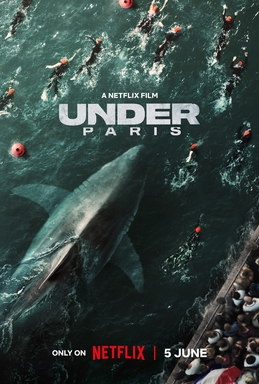
The film has its flaws, such as the dialogue or the fact that some of the characters are completely stupid, but this is one of the more interesting shark films since the legendary “Jaws,” one that emphasizes creating atmosphere and minimizing the appearances of the “monster.”
If you haven’t seen “Under Paris” yet, here’s the trailer:
It is important to note that the script for “Under Paris” is not exactly science fiction. Although we do not know of any sharks that have reached the Seine River, there are sharks capable of living in fresh and salted water. These sharks are, unsurprisingly, called “River Sharks” (or “Glyphis”) and are very limited in number. If, in the past, the conventional wisdom was that there were five species of river sharks, today, the assumption is that two have become extinct, leaving only three species left. Sadly, the remaining species are in tangible danger of extinction due to the destruction of their habitats and fishing.
Every few years, we hear in the news about an unfortunate marine animal that got lost and ended up in the Seine River, which could be a tangible danger to its life. In 2022, for example, a Beluga whale got lost and entered the river in the Normandy region. Although the whale can swim in freshwater, the conditions in the river made it difficult for him, and his condition became critical. He was rescued from the river in a complex operation to transfer him to saltwater that would allow him to recover, but it was too little and too late. In a measure of mercy, it was decided to euthanize him.
A few months earlier, a Killer whale (“Orca”) had arrived in the waters of the Seine. Although experts and animal enthusiasts tried to get him to return to the safest waters for him – including with the help of drones that made sounds of other killer whales above him – the unfortunate whale would not communicate with the rescue attempts, and he died. The reason is probably that the whale was suffering from a severe terminal disease called mucormycosis or “black fungus.” It can spread to the heart, lungs, and brain. The intense pain and functional difficulties, including confusion and inability to behave, led to the decision to euthanize him as well. This disease has been identified until now, mainly in North America, and in this case, for the first time in Europe.
Fear in the City of Lights: Paris' Darkest Attractions
🕳️ Paris Scary Tours
Get Your Guide |
Viator
🗼 Eiffel Tower Tickets and Tours
Get Your Guide |
Viator |
Tiqets
💀 Paris Catacombs, Cemeteries & Underground
Get Your Guide |
Tiqets
🎢 Disneyland Paris Tickets
Get Your Guide |
Viator |
Tiqets
⛴️ Seine River Cruises
Get Your Guide |
Viator |
Tiqets
🔐 Paris Escape Rooms
Get Your Guide |
Viator |
Tiqets
🎫 Paris City Cards and Attraction Passes
Get Your Guide |
Tiqets
Disclosure: Some of the links above are affiliate links. Purchasing through them may earn us a small commission at no extra cost to you — helping us keep the horror alive.
From Dogs To Bacteria: Can You Swim In The Seine River?
If you were thinking of jumping headfirst into the Seine on your next trip to Paris, think again. First, the water in the Seine is frigid, which means that anyone arriving without appropriate swimming equipment is in big trouble. During the warmer months of the year, the water in the Seine fluctuates around 11-15 degrees Celsius, which is a reasonable temperature. In the winter months, however, the picture is much more extreme. The water can reach 2-5 degrees Celsius, which is very difficult for swimming.
What is even more significant is that the water of the Seine River is, unfortunately, traditionally polluted. Since 1923, swimming in the river has been prohibited because the river water contains E. coli bacteria, which can cause infections and other problems. So why is the Seine River so dirty? One of the main problems is that the city’s sewage system sometimes overflows, causing rainwater and sewage to mix. Paris’s old sewage system, which has been in operation since the 19th century and suffers from various problems, fails to properly discharge water on stormy days, and these stormy days can occur about once a month. The mixture is poured into the river through dozens of storm drains designed for precisely these situations, creating massive Sienne River pollution.
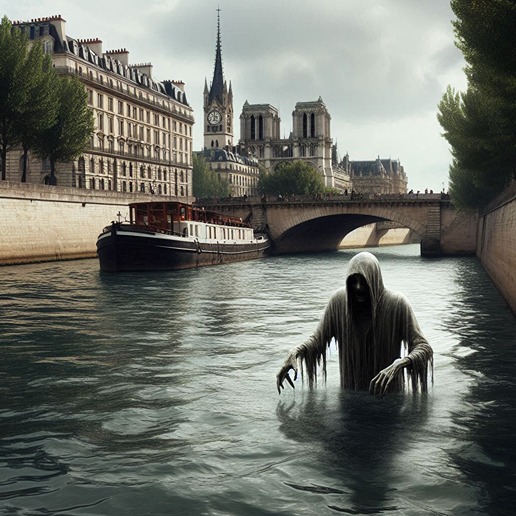
French President Jacques Chirac declared in the early 1990s that he would make the Seine suitable for swimming within five years and promised that he would be able to swim in these waters. In reality, this did not exactly happen, and Chirac passed away in the meantime. In between, we heard about the risks involved in swimming in the river, mainly because it is not possible to swim without occasionally putting water in your mouth: in an hour-long swim, according to experts, an adult tends to swallow about 15-30 ml of water, while in children the amount is larger and can exceed 45 ml. The danger is even greater in fast and massive swimming styles, especially rowing.
The bottom line is that exposure to bacteria in the river may cause various symptoms, such as diarrhea or urinary tract infections. The reason is that the number of bacteria and their specific strain indicates the water quality and their danger. Although bacteria are naturally found in the human body, in the lower intestine, certain strains and high concentrations may cause infection in the stool. From this infection, viruses that cause various diseases may come.
Making The Seine River Ready For The Olympics: Mission Impossible?
Then, the 2024 Paris Olympics arrived with a clear vision: to make the river a central competition location, Not just sailing but also swimming in triathlons or long-distance swimming competitions. Despite objections from top world swimmers, who claimed that “the Seine is not suitable for swimming,” France refused to give in.
The French capital had been building an underground storage tank about 30 meters deep for years, designed to store excess wastewater during significant storms. The plan was for the tank to store up to 50 million gallons of water and return it to the sewer system after the storm had subsided.
The Poop In The Seine Protest Takes Shape
Many Parisians opposed these attempts, seeing it as primarily a cynical attempt. Against the backdrop of the waste of money that would come at the expense of the French taxpayer and the demands from some workers to make enormous efforts so that the project would meet its goals, they decided on a protest that spread online like wildfire.
On the day that the French president and the mayor of Paris declared that they would swim in the water to prove that they were worthy of it, many residents of Paris threw their clothes and defecated in the river. The protest developed mainly through social networks, under the endearing hashtag “I’m ****ing in the Seine on June 23rd”, and even through a website that counted the hours until the time of communal defecation.
Well, The Water Is No So Clean
The complex project, certainly in a crowded city with outdated infrastructure like Paris, cost the French an estimated $1.5 billion. The good news is that it worked well enough to allow the competition in the river, as the French dreamed. The less good news is that these attempts did not go smoothly either. Despite all the efforts, it started with a few postponements after tests showed the water was too dirty to swim in. When competitions did take place, there were a few exceptions. A Belgian triathlete named Claire Michel reportedly contracted E. coli, was hospitalized and had to withdraw from the competition, where she eventually finished in 38th place.
The storm did not subside even after the Olympics ended. Other athletes reported that after the swim, they fell ill and suffered from vomiting. Bettina Fábián of Hungary, who finished fifth in the 10-kilometer open water swimming event, suffered from symptoms such as fever, nausea, and vomiting, which forced her to be hospitalized in one of the French hospitals. Leonie Beck of Germany stated that she vomited nine times after the swim.
The testimonies of the two and other athletes show the problems of swimming in water that is far from suitable for swimming. “We had to care about the [water] quality and what’s going to happen afterward. We [had to] focus on not swallowing water and [being] safe in the race,” Fábián described, adding that she noticed “some brown things,” which probably showed that some Parisians had lived up to their threats. “The quality of the water in the Seine has definitely improved,” Beck concluded sarcastically, showing that it is difficult to say that the attempts to purify the Seine were successful, some would say, as expected.
The Seine River Suicides – And The Brigada That Can Save The Day
Suppose you thought the picture of the dangers of the Seine River was limited to killer sharks, unfortunate whales, polluting bacteria, and human feces. In that case, it is time to add another danger to the wide variety of the Seine: falls into the river’s waters, sometimes due to murder or attempted suicide.
Although the Seine does not reach the dimensions of other mass suicide sites, such as the Golden Gate Bridge or the Suicide Forest in Japan, we believe that several dozen people commit suicide in the river every year, jumping into the cold water due to the many bridges that cross it throughout Paris. It is important to note that, unlike the Golden Gate Bridge, jumping into the water from one of the bridges here does not almost certainly result in death. Several dozen manage to be saved, partly thanks to the activities of the River Brigade team.
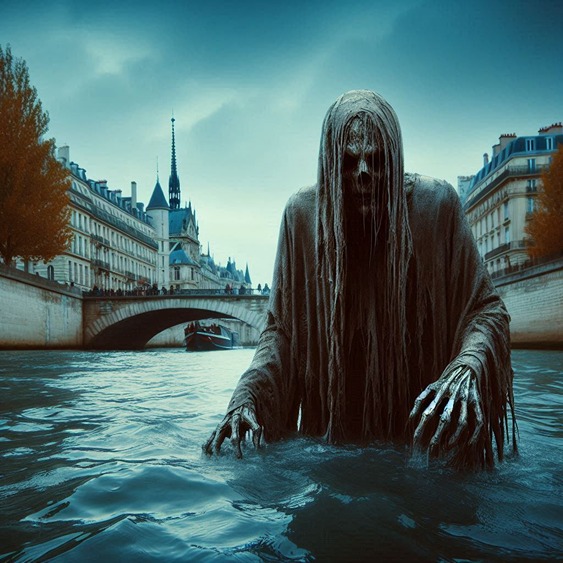
The River Brigade was established in 1900 as a kind of police body that was supposed to guard the Seine River in honor of the International Exhibition hosted by the French capital that year. More precisely, the goal was to secure several essential installations and buildings built near the river, mainly the Grand Palais, the Petit Palais, and the Alexandre III Bridge. The Petit Brigade was supposed to end its role when the exhibition ended. But in 1910, the great flood arrived, which paralyzed Paris and caused enormous damage. The brigade members were invaluable in the rescue and recovery efforts. Since then, they have been working in various ways, emphasizing saving people who fall or choose to jump into the river. The brigade includes police officers with diving licenses and experience in resuscitation, which is not surprising given the nature of their missions.
Seine River Cruise: One River, Countless Possibilities
The information we have provided here may cause you to avoid entering the waters of the Seine, and rightly so. Despite this – and perhaps precisely because of this, because we like to present the frightening and intriguing sides of famous tourist sites on this site – a cruise on the Seine is one of the most sought-after tourist attractions in Paris. It allows you to see the city from different angles that are very flattering, and you can be impressed by many of its must-see sites. It sometimes also combines an additional experience, such as a live musical performance, a luxurious dinner, or just a drink of an alcoholic beverage.
The Classic Seine Cruise
The classic Seine River cruise (the Sightseeing Tour) is the most sought-after among tourists. It lasts about an hour and will allow you to see Paris from different angles. You will pass between some of the city’s must-sees – such as the Eiffel Tower, the Louvre Museum, Notre Dame Cathedral, and more – sometimes with audio commentary. This type of cruise is usually the cheapest option, and it operates around the clock, from morning until around 10:00 p.m. Many will recommend taking a Seine cruise at night, the perfect time that will allow you to understand why Paris’s nickname is “City of Lights,” even if a cruise during the day has its charm and advantages.
One of the most prominent companies that provides this type of Seine cruise is “Bateaux Mouches,” a long-standing company that has been operating since 1949, employs dozens of ships, and serves millions of tourists in a given year. Since the cruise is in great demand, we highly recommend you reserve a place in advance and buy tickets for a Seine cruise as early as possible, even before arriving in the city. The major ticket sites, including Get Your Guide and the Tiqets website, which we like very much, allow flexible booking, sometimes with the possibility of changes or cancellations without charge up to 24 hours before the chosen date.
Seine River Dinner Cruise
Bateaux Mouches and other companies (such as the popular “Bateaux Parisienne”) operate cruises with some additional attractions. With the Seine River dinner cruise, you can enjoy a quality meal, sometimes even a full three-course meal and dessert, often with an alcoholic drink.
Romantic Seine River Cruise
Another popular option is the Romantic Seine River Cruise, mostly at night. In most cases, the cruise is accompanied by a live performance, or at least pleasant music, and you get a dinner or at least some alcohol. This type of cruise will be longer – usually between two and two and a half hours – and its price is naturally higher because love does cost a thing.
Family Seine River Cruise
You can also find some versions of Family Seine River Cruise, which usually means more friendly explanations (language can be a barrier) and sometimes activities for children during the cruise, like painting or a show.
Seine River Hop On Hop Off Cruise
If you want to use the boats as a means of transport, you can also choose a cruise with unlimited boarding and disembarkation points, which is known as Hop On, Hop Off. Similar to the tourist bus formula, which also operates in Paris, there are about 10 stops along the route, some of which are very close to some of Paris’s must-see sites.
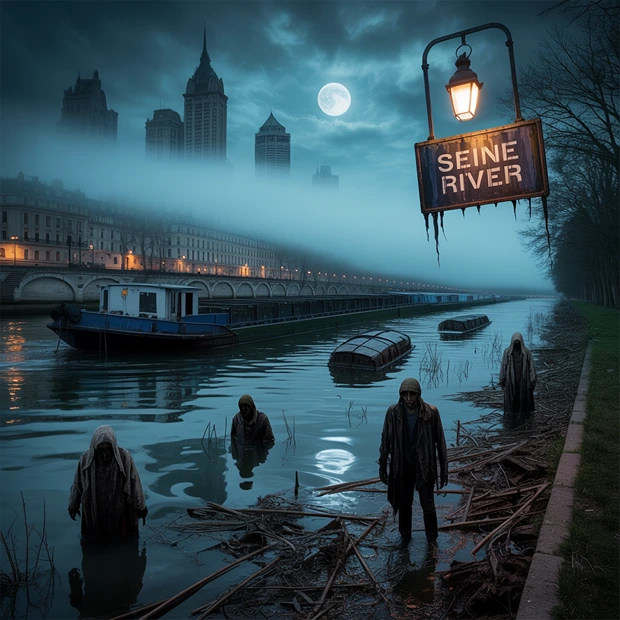
Combined Tickets For Seine Cruises
You can also find tickets that combine a cruise on the Seine with other attractions and sites from the vast catalog of Paris and its surroundings, such as the Eiffel Tower, the Louvre Museum, the Palace of Versailles, the Paris Aquarium, and even Disneyland. The main principle is that booking a combined ticket can reduce each tourist attraction’s costs, saving significant money for the average family.
Beyond the ticket price, the date of the cruise, and the conditions (for example, whether an audio guide or drinks are included), it is also essential to ask about each case where a specific Seine cruise departs. Each company or even type of cruise can have different boarding points, but the common denominator is that they are almost always central and accessible landmarks in the city. The Bateau Frisian, for example, sails near the Eiffel Tower, while to start the Bateau Mouch cruise, you can go to another accessible point, a short distance from the busy Champs-Élysées. When you book a cruise on the relevant website, you will receive the appropriate instructions, including the arrival time and location.
If you are looking for an extended cruise for all intents and purposes, you can go on a long cruise on the Seine, sometimes between a few countries. Some cruises have a very indulgent menu: economy on full board, gourmet meals, fine wine at no extra charge, daily musical performances, and, of course, shore excursions. To enjoy the experience, you must say goodbye to a few thousand euros per person.
💀 Killer Deals & Scary Recommendations 💀
🎭 Costumes & Accessories
HalloweenCostumes Fun Costumes Entertainment Earth
🛒 Online Shopping
AliExpress Amazon Walmart Etsy
🧛 Collectibles & Horror Brands
Funko Hot Topic Lego Spirit Halloween
🎢 Attractions & Tours
GetYourGuide Tiqets Viator Klook
📖 Blogs & Horror Sites
Bloody Disgusting iHorror Fangoria
🩸 Disclaimer: Some links are affiliate links. The price stays the same – it just helps keep the site alive 👻

